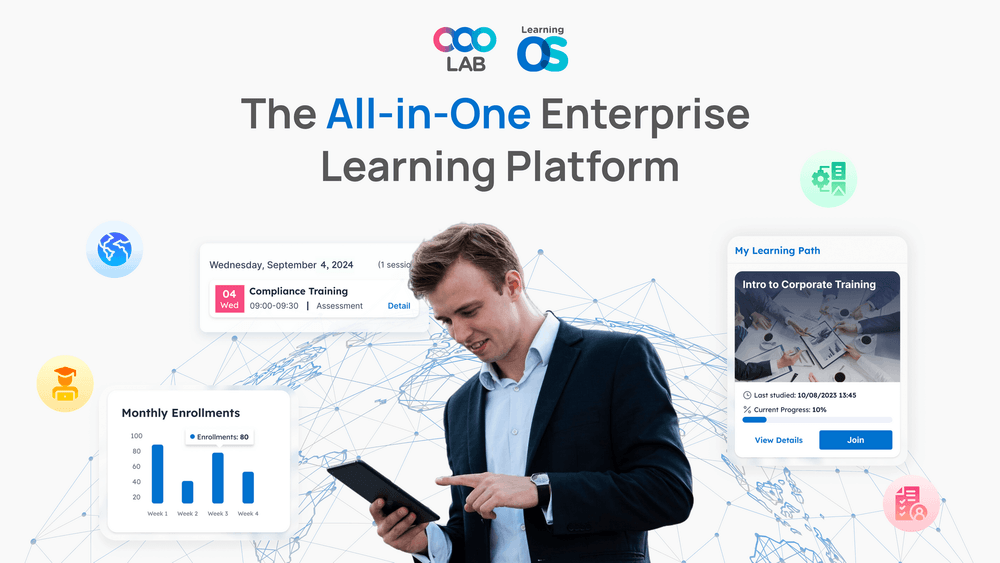

Talent assessment is evolving fast, and businesses need better ways to identify, develop, and retain top performers. Traditional methods like resumes and interviews often fall short, missing the full picture of a candidate’s or employee’s potential. Enter skill quotient, a modern approach that measures abilities through data-driven, objective metrics. By focusing on skills, behaviors, and potential, skill quotient transforms how organizations assess talent, ensuring alignment with business goals and future needs.
This blog explores how skill quotient is reshaping talent assessment, with insights and strategies to help HR teams and leaders make smarter decisions. We’ll dive into its benefits, implementation, and why it’s a game-changer for 2026 and beyond.

Skill quotient is a metric that quantifies an individual’s skills, competencies, and potential to perform in specific roles. Unlike traditional assessments that rely heavily on credentials or subjective impressions, skill quotient uses data-driven tools—assessments, simulations, and analytics—to measure capabilities like problem-solving, adaptability, and technical expertise. It provides a holistic view, blending hard and soft skills to predict job success.
Why does this matter? A 2025 Gallup study found that 87% of organizations expect skill gaps to disrupt operations by 2027. Skill quotient helps bridge these gaps by identifying talent strengths and weaknesses with precision. It’s especially critical in fast-changing industries where roles evolve rapidly, ensuring teams are equipped for current and future challenges.
By adopting skill quotient, businesses move beyond outdated hiring practices, focusing on what truly drives performance. This shift boosts retention, engagement, and productivity, making talent assessment a strategic asset.
>>> Read more: Skill Quotient Training Tool
>>> Read more: Why Is Skill Quotient Important for Employees?
Traditional methods like resumes, interviews, and performance reviews often miss the mark. Here’s why:
Subjectivity: Interviews rely on gut feelings, leading to bias. A 2024 LinkedIn Learning report noted that 62% of hiring decisions involve unconscious bias.
Static Metrics: Resumes highlight past achievements but don’t predict future potential.
Incomplete Insights: Performance reviews may overlook soft skills or adaptability critical for evolving roles.
Time-Intensive: Manual assessments are slow, delaying hiring in competitive markets.
These gaps leave organizations struggling to identify talent that aligns with long-term goals. Skill quotient offers a solution by providing objective, scalable, and predictive assessments.
Book Free Demo with us. Bring your Training and Learning to a new height with LearningOS.

>>> Read more: How To Measure Skill Quotient In Employees?
>>> Read more: Mastering Skill Quotient Measurement: Key Metrics and Strategies for Accurate Assessment
Skill quotient leverages technology and data to create a more accurate, inclusive, and efficient approach to talent assessment. Below are the key ways it transforms the process.
Skill quotient uses assessments—such as coding tests, situational judgment exercises, or cognitive tasks—to measure specific competencies. These tools generate quantifiable scores, reducing bias and providing a clear picture of abilities. For example, a sales role might assess negotiation skills through a simulation, yielding a skill quotient score for strategic thinking.
A 2025 Deloitte study found that data-driven assessments improve hiring accuracy by 28%. By grounding evaluations in objective metrics, skill quotient ensures fairer, more reliable outcomes.
Unlike traditional methods that focus narrowly on technical skills, skill quotient evaluates both hard and soft skills. It measures emotional intelligence, collaboration, and adaptability alongside job-specific expertise. This holistic approach aligns talent with organizational culture and goals.
For instance, a skill quotient assessment might reveal a candidate’s strength in creative problem-solving, making them ideal for innovative roles. This comprehensive view helps identify high-potential talent often overlooked by resumes.
Skill quotient uses AI to predict how well candidates or employees will perform in future roles. By analyzing patterns in performance data, it forecasts adaptability to new technologies or market shifts. This is critical for industries facing disruption, like tech or healthcare.
Predictive analytics ensure organizations hire and develop talent ready for tomorrow’s challenges, not just today’s tasks. Skill quotient becomes a forward-looking tool for workforce planning.
Once assessed, skill quotient data informs tailored training programs. An enterprise LMS can use these insights to recommend courses addressing specific gaps, such as leadership skills or technical proficiency. This personalization boosts engagement and accelerates growth.
For example, a rep with a low skill quotient in data analysis might receive targeted analytics training, enhancing their contribution to the team.
Manual assessments struggle to scale across large or distributed teams. Skill quotient, integrated with an enterprise LMS, automates evaluations, delivering consistent results globally. This scalability is vital for enterprises with diverse workforces.
Automation also saves time, allowing HR teams to focus on strategic initiatives while ensuring assessments are standardized and fair.
Traditional methods often perpetuate bias, favoring candidates with certain backgrounds. Skill quotient focuses on measurable skills, leveling the playing field. By prioritizing ability over credentials, it promotes diversity and inclusion.
A 2024 Harvard Business Review study found that skills-based hiring increases diversity by 22%. Skill quotient supports equitable talent assessment, fostering inclusive teams.
>>> Read more: Social Quotient Vs Skill Quotient: A Comprehensive Analysis
>>> Read more: Skill Quotient Assessment Tools: Unlocking Employee Potential
Skill quotient is revolutionizing talent assessment by offering objective, scalable, and predictive insights into employee capabilities. By moving beyond traditional methods, it empowers organizations to hire smarter, develop strategically, and build diverse teams. With enterprise LMS support, skill quotient delivers personalized, data-driven assessments that drive performance and engagement.
Embrace skill quotient today to transform your talent strategy. By leveraging its power, you’ll position your organization for success in 2026 and beyond.
At OOOLAB (pronounced 'uːlæb'), our mission is to make complex learning operations simple. We aim to positively impact the lives of over 1,000,000 learners and educators by the end of 2026.
OOOLAB's LearningOS provides educational institutions and corporate enterprises with an all-in-one solution to create and deliver engaging learning experiences.
We meet organizations' needs or support your growth. We provide undivided attention. We provide:
1. Dedicated success manager: We offer direct communication with a real human who'll discuss your enterprises unique learning operations and goals.
2. Personalized setup: Our team will help you transition to LearningOS on your schedule, one step at a time.
3. Around the clock support: Get help from us any time, and in any time zone.
We have recently launched a new AI training tool, Skill Quotient OS, designed to elevate hybrid training to new heights. It offers role-play exercises with scenarios and assessments. This tool can apply in sales training, corporate development and customer support training in any industry.
Reach out to us at: LinkedIn, Facebook, Instagram, Tiktok, X
1. What are the main benefits of LearningOS
Our platform is easy to use and automates all aspects of your learning operations. It efficiently manages complex tasks, allowing you to concentrate on delivering exceptional learning experiences.
2. What main features does LearningOS offer?
Our all-in-one software solution combines a Content Management System, a Learning Management System, content authoring tools, and a mobile friendly Learner Portal.
3. Can your platform be used for corporate enterprises?
Absolutely! LearningOS is an Enterprise LMS is a great fit for corporate learning. In fact, we have clients with up to 700,000 employees using LearningOS! Upskill your workforce by creating and assigning interactive eLearning content while effortlessly tracking employee progress.
4. Who currently uses your platform?
Our platform is currently used by over 120,000+ learners, parents, and employees across 21 countries worldwide!
5. What types of content options are available on your platform?
We offer ready-to-go curriculums for various educational purposes or our expert design team can build a custom course for you. We can also upload your existing learning materials and enhance them digitally.
6. What is unique about LearningOS?
Our platform, designed by educators for educators, provides you with all the tools you need to scale. Build and promote your own hybrid and blended learning courses and save money on licensing fees by owning your own proprietary content.
7. How can I get started?
Schedule a meeting with our experts and we’ll talk about how our platform can address your unique challenges and help to grow your business.